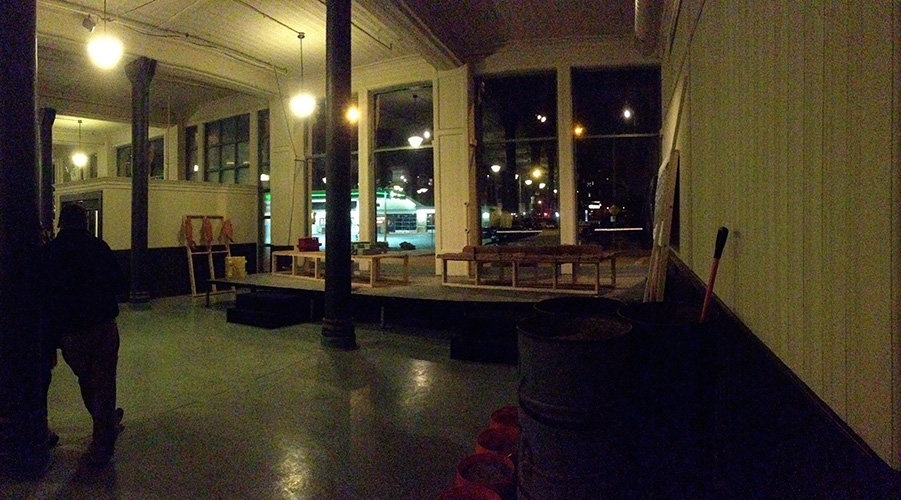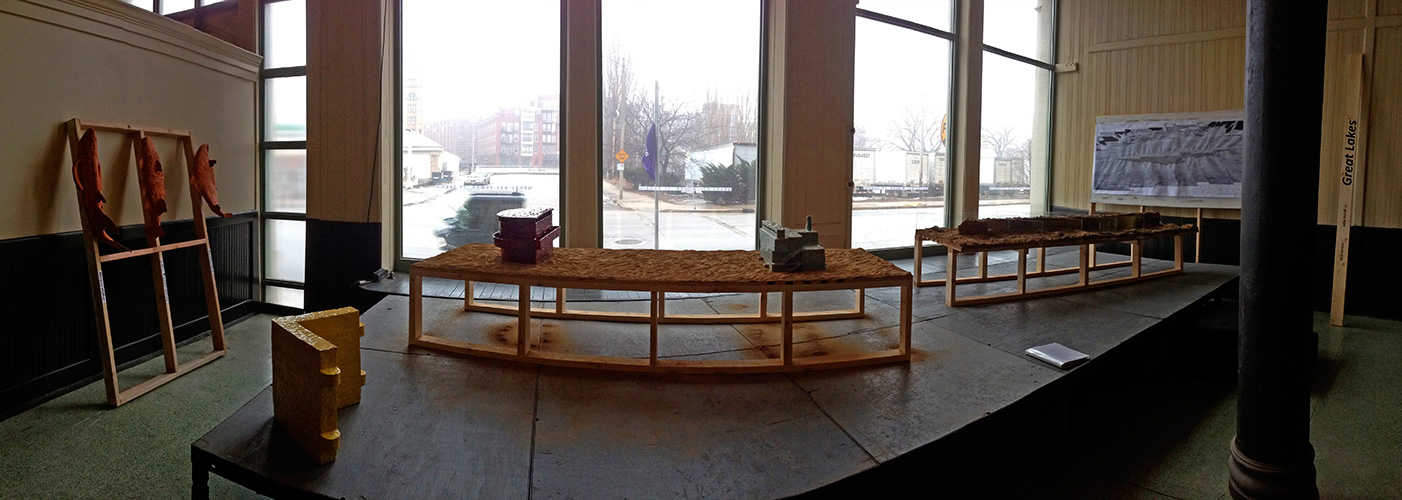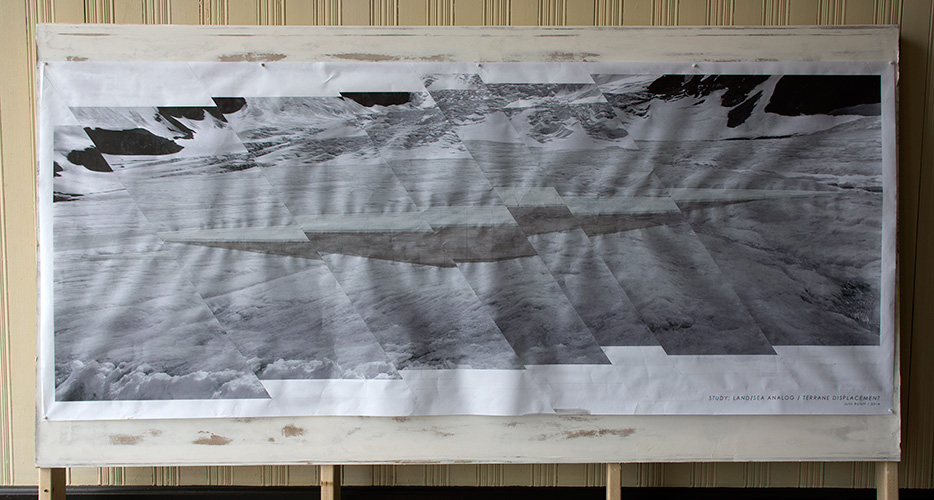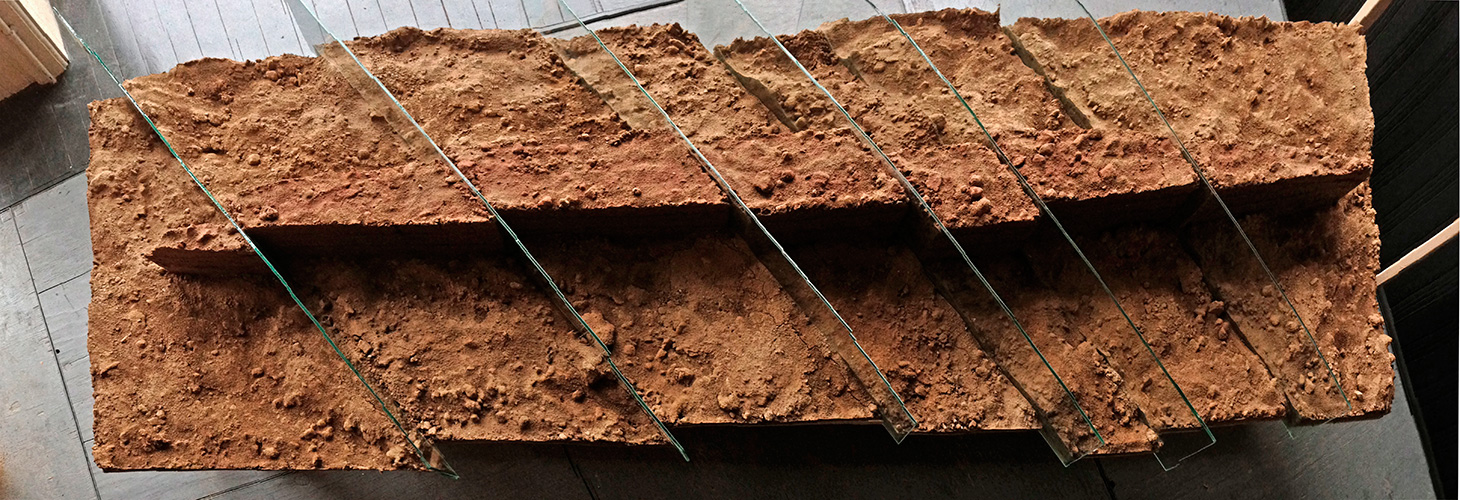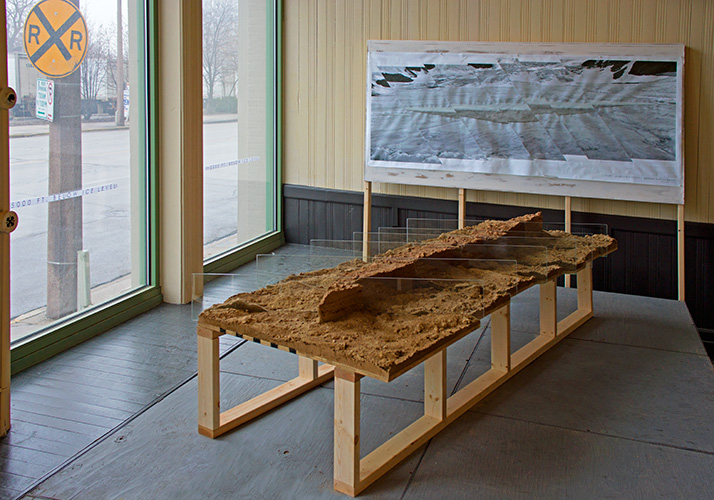Study: Land/Sea Analog / Terrane Displacement
Great Lakes Project
Great Lakes is a collaboration in two parts with Neil Forrest, NASCAD
Pritzaff Building / Milwaukee, WI / NCECA 2014 Conference
Top left: installation view, night of the opening reception, March 20, 2014
Top right: panorama of Great Lakes with Neil Forrest's project on the left, Study: Land/Sea Analog / Terrane Displacement on the right.
Lower left: drawing component of Study: Land/Sea Analog / Terrane Displacement
42 in. x 96 in. / cut and re-assembled digital print, pencil and acrylic watercolor on vellum / drywall and wood support
Lower center: tableau component of Study: Land/Sea Analog / Terrane Displacement
25 in. x 42 in. x 109 in. / wood, SE Wisconsin glacial till and glass
Lower right: Study: Land/Sea Analog / Terrane Displacement
drawing and tableau components on commercial stage with digital print on vellum strips on each of 4 project windows:
"~5000 FT. BELOW ICE LEVEL"
